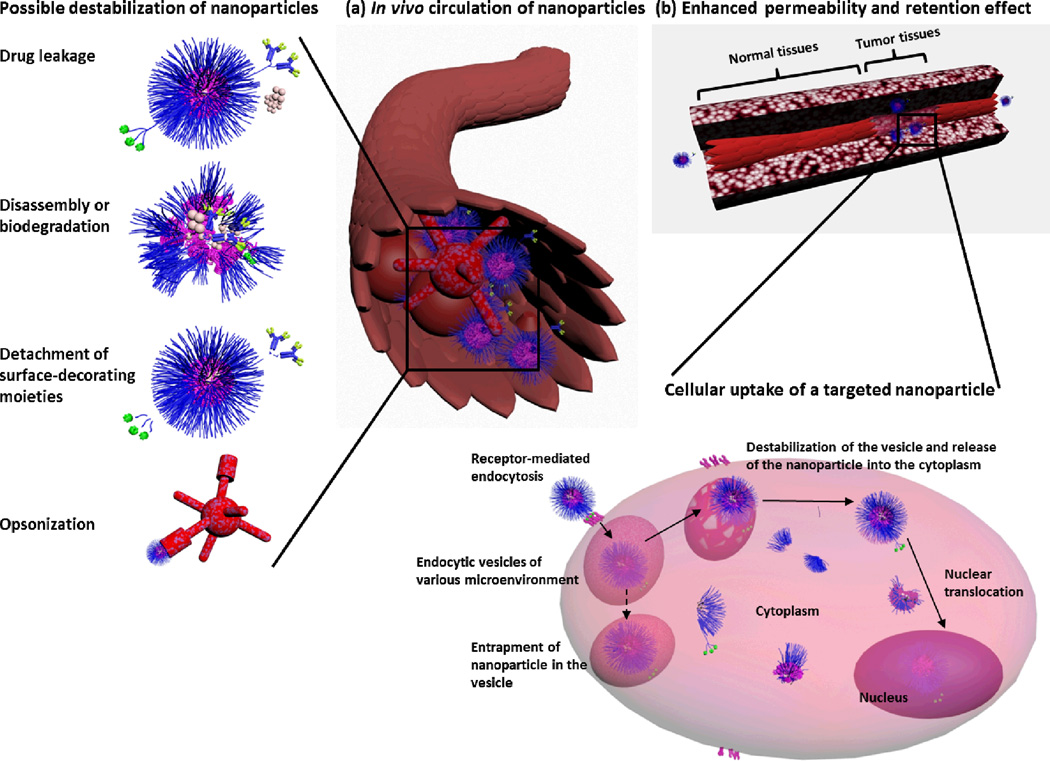Fig. 4.
Possible destabilization and degradation pathways of polymeric nanoparticles during in vivo circulation (a) and the EPR effect and intracellular fate of nanoparticles (b). Drug-leakage, disassembly or degradation, detachment of surface-decorating moieties, opsonization and clearance of nanoparticles during circulation can all be detrimental to the efficiency of nanoparticles. Tumor tissues are characterized by the leaky vasculature that allows nanoparticles to accumulate in the tumor tissues. The endocytosis of the nanoparticles can then occur via different mechanisms (e.g. via multivalent binding and receptor-mediated endocytosis), ending into endocytic vesicles of different microenvironments depending on the composition and characteristics of the nanoparticle. Entrapment of nanoparticles into the endocytic vesicles (dashed arrow) prevents them from reaching their target sites (cytoplasm, mitochondria, nucleus). The disassembly of polymeric nanoparticles and drug release can occur at various steps during the circulation and the intracellular trafficking pathway.

